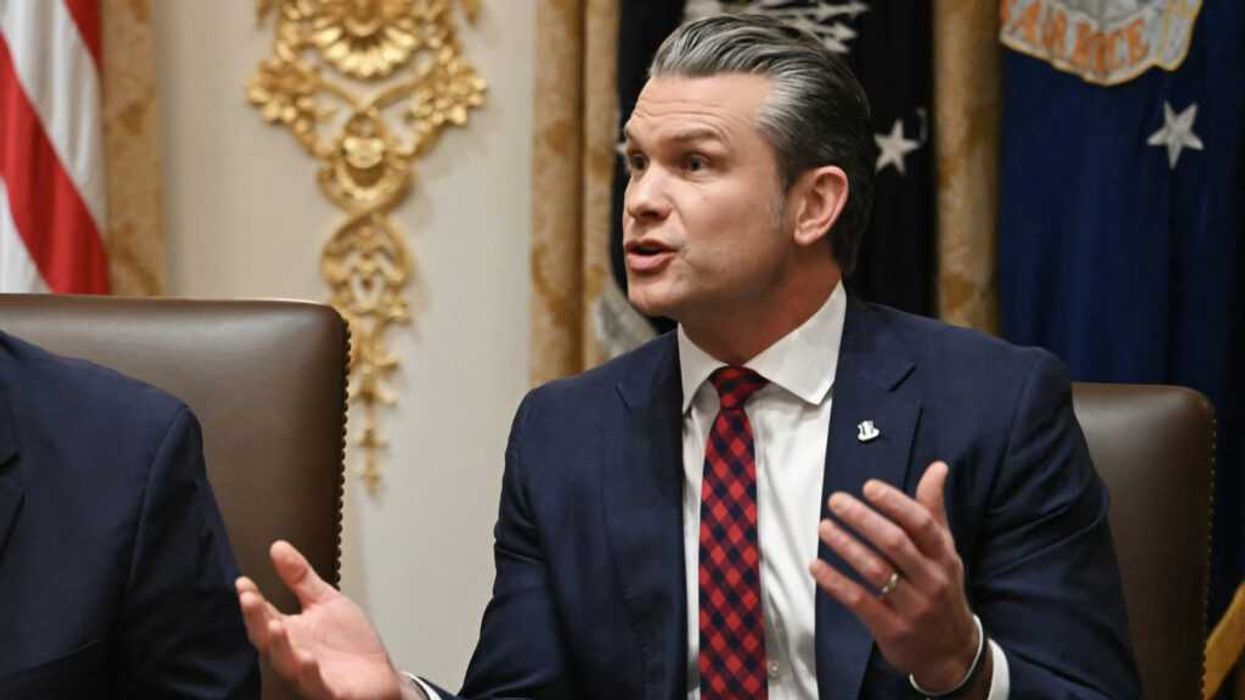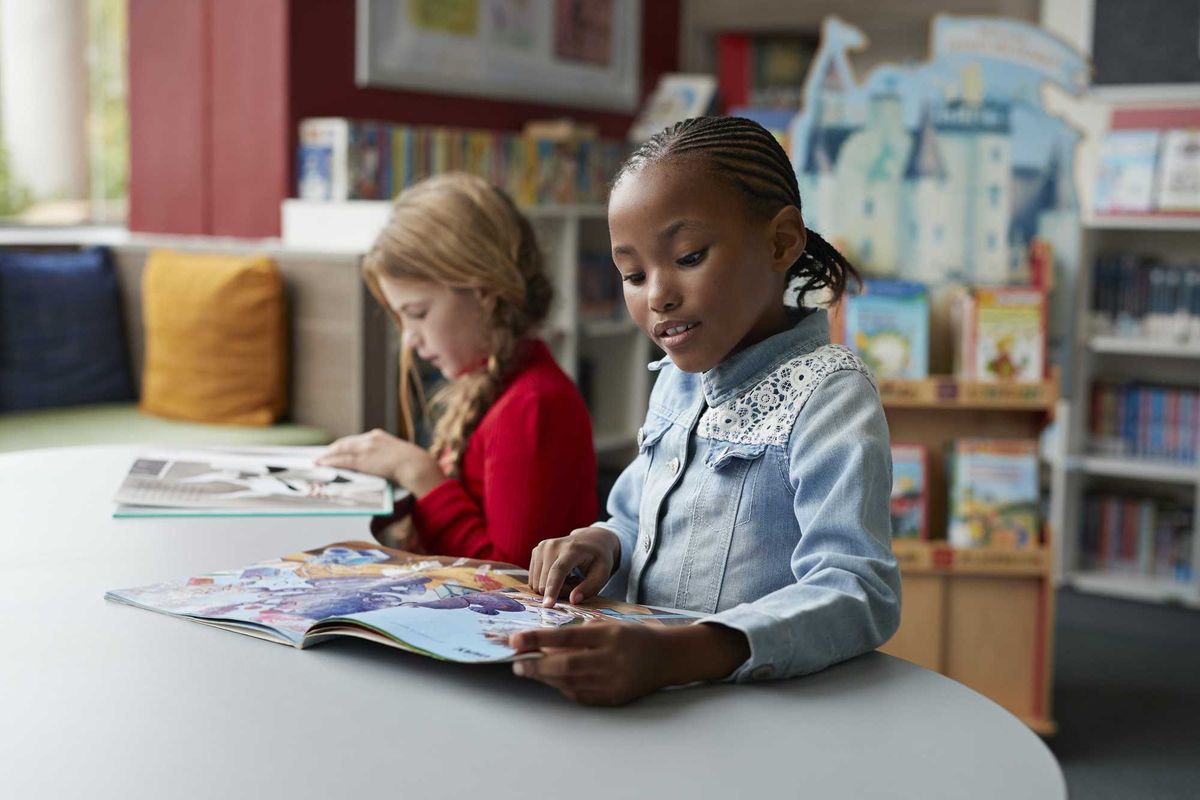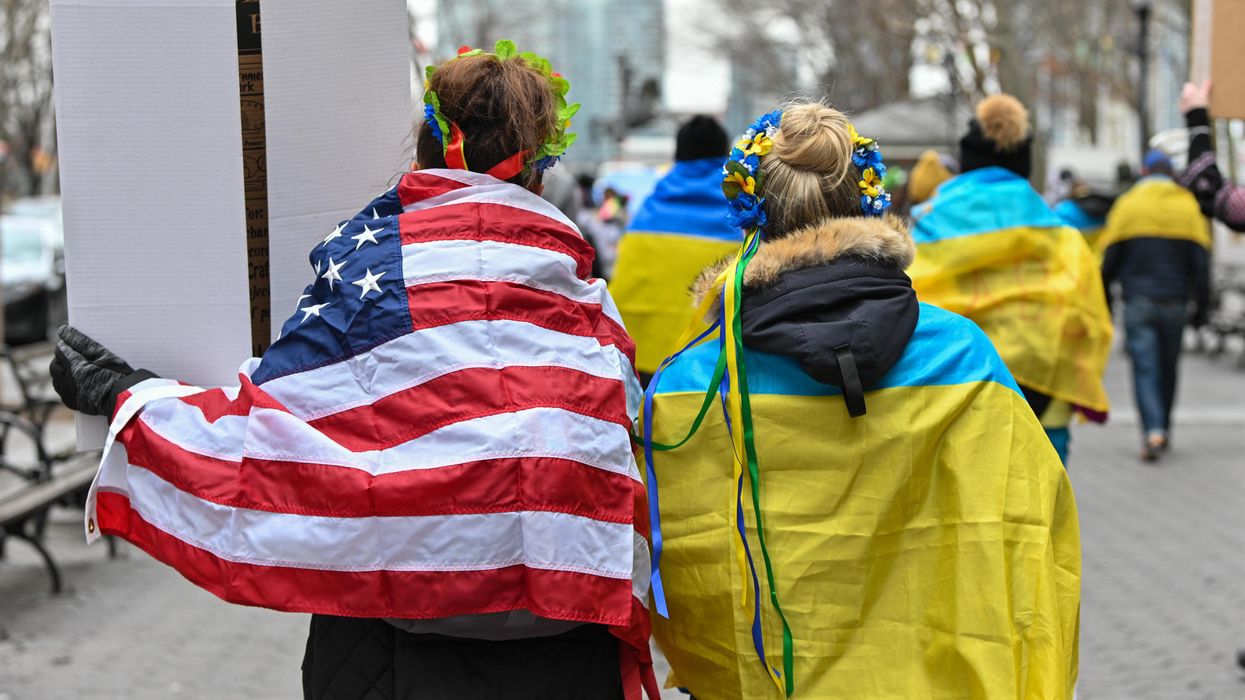Nonprofit VOTE was founded in 2005 by a consortium of state nonprofit associations and national nonprofit networks to provide resources and trainings for the nonprofit sector on how to conduct nonpartisan voter participation and election activities. Nonprofit VOTE partners with America's nonprofits to help the people they serve participate and vote. We are the largest source of nonpartisan resources to help nonprofits integrate voter engagement into their ongoing activities and services.
Site Navigation
Search
Latest Stories
Start your day right!
Get latest updates and insights delivered to your inbox.
Top Stories
Latest news
Read More

U.S. Secretary of Defense Pete Hegseth speaks during a cabinet meeting hosted by President Donald Trump in the Cabinet Room of the White House in Washington, D.C., on Tuesday, Dec. 2, 2025.
(Andrew Caballero-Reynolds/AFP/Getty Images/TNS)
You can’t hide from war crimes by calling them ‘fake news’
Dec 09, 2025
Since September of this year, the United States military has been blowing up boats allegedly trafficking drugs in the Caribbean.
Whether these attacks are legal is hotly debated. Congress hasn’t declared war or even authorized the use of force against “narco-terrorists” or against Venezuela, the apparent real target of a massive U.S. military build-up off its coast.
The Trump administration has simply unilaterally designated various — alleged — drug traffickers as “terrorists” or members of “terrorist organizations,” and then waged war upon them. The administration’s internal legal finding supporting all of this hasn’t been publicly released. But whatever their case in private is, it was sufficiently weak that the British government announced in early November it would no longer share intelligence with the U.S. relevant to the Caribbean operation over concerns about its lawfulness.
On Friday, the Washington Post dropped a bombshell report about the first of these operations back in September. During the strike, the Navy not only took out a suspected drug-trafficking boat — as had been reported previously — but when survivors were spotted clinging to the wreckage, the special operations commander overseeing the operation ordered a second strike on the survivors, in order to comply with Defense Secretary Pete Hegseth’s order to kill everyone involved.
“Hegseth gave a spoken directive, according to two people with direct knowledge of the operation,” the Post reported. “ ‘The order was to kill everybody,’ one of them said.”
Whatever you think about the broader Caribbean operation, it is a simple fact that shooting survivors at sea is war crime, under American and international law. Of course, as some suggest, since this operation is not a legal war, maybe it’s not a war crime, just a crime-crime.
Later Friday, in a lengthy social media post, Hegseth attacked the Washington Post’s report as an instance of the “fake news … delivering more fabricated, inflammatory, and derogatory reporting.”
What Hegseth didn’t do was directly deny the report. Instead, he insisted that “we’ve said from the beginning, and in every statement, these highly effective strikes are specifically specifically intended to be ‘lethal, kinetic strikes.’ ”
Declaring your intent was to kill everybody on the first try isn’t a legal excuse to finish off unarmed survivors.
Hegseth offered follow-up posts that were boastful or childish, but did not deny the charge.
With even Republican members of Congress expressing grave concerns, the official story changed from “fake news” to an actual denial. Trump said that Hegseth told the president that he did not give any such illegal order, “and I believe him, 100%,” adding that he “wouldn’t have wanted that. Not a second strike.”
So it now appears the White House has confirmed there was a second strike on the survivors, and conceded that it would at least be against the president’s policy. Whether the White House will concede the strike was unlawful remains to be seen. Indeed, exactly what happened remains murky. It surely seems like someone gave an order for a second strike. And if it wasn’t Hegseth, whoever that person was could be looking at a court-martial — or given who the commander-in-chief is, a pardon.
But I don’t want to get ahead of the news.
Instead, I’ll make a few points.
First, a minor gripe: This administration and its defenders need to be more selective in their use of the term “fake news.” I have no problem calling a false story “fake news.” But if you know that a story isn’t false, calling it “fake news” just sets you up to look like even more of a liar or hypocrite down the road when you end up admitting the truth and defending actions you once pretended were slanderous.
More importantly, the whole Caribbean strategy is constitutionally and legally dubious. As a matter of foreign policy, it looks more and more like a pretext for some kind of regime change gambit in Venezuela. If the administration has evidence that justifies its actions, they should share it with Congress and ask for permission to wage war.
Even more important: illegal orders cannot be justified. When a half-dozen Democratic members of Congress released a video saying that the military shouldn’t follow “illegal orders,” the president and many of his defenders became hysterical. Trump lamented that America has become so “soft” that such “seditious behavior” isn’t punished by death anymore.
More sober critics of the Democrats complained that the video sowed confusion in the ranks and hurt morale. I’m actually sympathetic to that argument.
But you know what else sows confusion and hurts morale? Issuing illegal orders – or even appearing to do so.
Jonah Goldberg is editor-in-chief of The Dispatch and the host of The Remnant podcast. His Twitter handle is @JonahDispatch.
Keep ReadingShow less
Recommended

People protest in Washington, DC as part of the No Kings Rallies on October 18, 2025 in Washington, DC.
(Photo by Tasos Katopodis/Getty Images for No Kings)
Boomer Noise Making and Gen Z’s Refusal to Sing Along
Dec 08, 2025
The prevailing narrative about the conspicuous absence of Gen Z from the No Kings protests is a classic case of facile pop psychology masquerading as political insight. According to this account, young people are "demoralized," "disillusioned," or "too online" to show up in the streets. But this interpretation is not only simplistic and evidently false: It is also self-serving. It absolves the older generations of responsibility for their political theater and, conveniently, places the blame for democratic decline on the very cohort that has the least power and the most at stake.
A more honest analysis begins with acknowledging what these protests really are: Carefully managed performances by comfortable Boomers who have profited handsomely from the status quo establishment and therefore have no intention of actually confronting let alone dismantle that establishment. That is why these rallies are organized with meticulous politeness, routed through predetermined corridors, and conducted under the watchful approval and protection of the same institutions they claim to oppose. They make noise, shout slogans, sing songs, but by design they do not disrupt anything. They are the political equivalent of a controlled burn on land that no one wants to risk letting catch fire.
Just as telling as their choreography is the absence of clear, actionable demands. The No Kings protests revolve around emotional grievance rather than political program. What bothers these protesters is not authoritarian power as such, but the way that power is being expressed: Too crudely, too boorishly, without the polite varnish that used to make the operations of the state feel lofty and dignified. In other words, they are not trying to stop domination. What they want is domination to return to its earlier style, where its anti-establishment challenges can be stifled by averting one’s eyes. They long for an erstwhile status quo that worked well for them, so long as it remained discreet.
Gen Z sees this perfectly clearly. Their absence from these protests is not evidence of apathy but of keen discernment. Gen Z refuses to be recruited into a movement whose entire purpose is to make the old order look and feel civil again. They will not help stage a tableau that presents mass dissent while asking for nothing other than the return of a mythical era of smooth civility.
When young people take to the streets, the contrast could not be starker. The Gaza protests and campus solidarity encampments made this abundantly obvious. Students and young activists articulated unambiguous demands: Divestment from companies supplying occupation and warfare, cessation of U.S. military aid to Israel, and university accountability for their financial and political entanglements. They did not gather simply to express "disapproval" or "discontent." They set conditions for change and they did not limit themselves to marches designed for quick dispersal. They built sustained physical presence. They disrupted business as usual: University operations, donor relations, administrative routines, and corporate partnerships. They imposed political and material costs on institutions that preferred to operate in quiet, polite complicity.
This dynamic was on full display in another arena as well: The series of interruptions at Kamala Harris' campaign and post-election book toor public appearances by young protesters denouncing her complicity in the ongoing Gaza genocide. These disruptions were not random outbursts; they were deliberate interventions insisting that powerful officials confront the consequences of their policies rather than glide on through events cushioned by decorum. But perhaps even more revealing than the protests themselves was the incandescent outrage of the Boomers and Gen Xers in the audience, those self-proclaimed lovers of free speech, lifetime warriors against racism, and defenders of democratic norms, who recoiled not at the endless images of slaughtered babies (such images and videos were nearly never shown on Rachel Maddow, their touchstone TV Show), but at the ‘crass incivility’ of those who protested and continue to protest against the genocide enablers. Their fury at these young people, their reddened faces and trembling indignation at the breach of etiquette, laid bare the truth: what they cherish is not democracy, but the performance of democracy. What offends them is not injustice, but the disruption of their comfort. Their reaction to those speaking truth to power shows just how thin their commitment is to a democratic order that claims to comfort the weak and disturb the powerful.
The same clarity and willingness to confront authority appears in the ways young people have resisted ICE. They have intervened in live deportation attempts, blockaded vans, mobilized neighborhood groups, and interrupted federal operations in real time. They have pushed back against masked federal troops kidnapping people from the streets without warrants or court orders, refusing to normalize the illegal militarization of their neighborhoods. These acts of resistance were not approved by city officials, nor were they scheduled for weekend convenience. They involved risk, improvisation, physical presence, and the assertion of moral authority against state power in its bluntest form.
By contrast, the No Kings protests ask nothing of the system except that it recover its old manners. They are acts of civic nostalgia, not resistance. They do not disrupt; they decorate. And Gen Z understands that showing up to these events would mean legitimizing a project with which they fundamentally disagree. They are not interested in being conscripted into a generational fantasy in which the restoration of civility is mistaken for the restoration of justice.
The story, then, is not that young people are too demoralized to protest. It is that they have already shown a far more sophisticated understanding of what protest must accomplish. They know that a march with no demands is a parade. They know that chanting through predetermined avenues changes nothing. They know that being permitted is not the same as being effective. Their absence from No Kings is not evidence of despair but of clarity: a refusal to help reinforce an illusion that well-behaved dissent is enough.
Keep ReadingShow less

a woman in a white shirt holding a red ribbon
Photo by Bermix Studio on Unsplash
World AIDS Day and the Fight to Sustain PEPFAR
Dec 08, 2025
Every year on December 1, World AIDS Day isn't just a time to look back, but it’s a call to action. This year, that call echoes louder than ever. Even as medicine advances and treatments improve, support from political leaders remains shaky. When the Trump administration threatened to roll back the President's Emergency Plan for AIDS Relief (PEPFAR), it became clear just how vulnerable such critical programs can be. The effort to weaken or even dismantle PEPFAR wasn't just a policy debate; it lifted the curtain on how fragile moral commitments are. Revealing how easily leaders can forget the human stakes when political winds shift.
Despite these challenges, PEPFAR endures. It remains among the world's most effective global health efforts. For over twenty years, it has received bipartisan backing, saved more than 25 million lives, and strengthened public health systems across dozens of countries, notably in Africa and the Caribbean. Its ongoing existence stands as a testament to what is possible when compassion and strategic investment align. Yet the program's continued effectiveness is anything but guaranteed. As attempts to chip away at its foundation recur, PEPFAR's future depends on unflagging advocacy and renewed resolve to keep it robust and responsive.
The threat to PEPFAR revealed something deeper: as HIV became easier to treat and faded from daily headlines in wealthier countries, our collective sense of urgency weakened. Political attacks on such programs expose an even broader societal amnesia—a willingness to let remarkable progress slip away through neglect or partisan infighting.
But for millions, especially Black communities, queer and Indigenous people, and those without reliable access to healthcare—the AIDS epidemic endures, ever-present and often invisible to the privileged. World AIDS Day, especially now, is about more than recommitting to aid spending: it's a test of whether America can recover the moral memory that first sparked global action and avoid letting history repeat itself through complacency or carelessness.
Today's medical reality would have seemed miraculous a generation ago: antiretroviral drugs make HIV manageable, while preventative medications and rapid testing have transformed both outcomes and expectations. But science hasn't reached everyone, nor has it erased the longstanding inequities the epidemic exposed. Disparities persist here in the United States. Black Americans comprise roughly 13 percent of the population, but nearly 42 percent of new HIV cases, while the South continues to suffer the highest rates due to poverty and lack of access to care. The most significant risk now isn't ignorance: it's losing focus, letting attention drift, and leaving the most vulnerable behind.
Moments of instability when PEPFAR faces budget cuts or operational threats cause immediate harm: clinics strain under funding losses, prevention efforts stall, and access to medication wavers. Though PEPFAR still stands, its position is less secure than it appears. Each debate about its future puts lives in the balance and makes it harder to rebuild relationships and infrastructures lost to even brief lapses. So the current landscape brings into sharper focus not just the challenges of policy, but the underlying drift of our public conscience. Attacks on PEPFAR aren't grounded in evidence of its failure, but in politics, ideology, or skepticism toward global engagement itself.
Yet HIV's stubborn presence is a mirror held up to global values. Diseases ignore borders, and so must our compassion. When wealthier nations let programs like PEPFAR atrophy, they accept a world in which birthplace determines fate—abandoning the vision of global solidarity that programs like PEPFAR once embodied. Eroding that foundation risks not just progress, but also hope and trust.
On World AIDS Day, we ought to imagine what comes next. In many faith communities, Advent brings an obligation to carry memory into present action—not just to recall the past, but to act with a sense of duty shaped by difficult lessons. Strengthening PEPFAR and securing its future depends on that same ethic. This neighborliness pushes us to recognize that the well-being of a mother in Tanzania and a young man in Alabama is interconnected. The ongoing fight against stigma remains critical. Even as language has softened, prejudice persists, making care harder to seek and receive, faith organizations and advocates must continue their work to stamp out shame—putting human dignity and compassion first.
Revitalizing public concern will take more than statistics. Amplifying the stories and experiences of people living with HIV, supporting bold education campaigns, and building real coalitions matter more than ever. HIV has not disappeared; it remains preventable and disproportionately targets the marginalized.
Commemorating World AIDS Day is, at its heart, a refusal to forget. It honors not just those lost, but those who survived, resisted, and built communities of support. Accurate remembrance is only the beginning; absolute honor resides in protecting the living and keeping life-saving programs like PEPFAR beyond the reach of short-term political games.
The ongoing struggle against HIV and AIDS tests both domestic priorities and global leadership. Will the U.S. step up as a trusted partner and healer, or keep retreating behind suspicion and isolation? Keeping PEPFAR strong is only the first step. The deeper challenge is to rekindle the public conscience to approach suffering as a call to action, not a distant trouble.
Managing HIV and AIDS with the tools of medicine alone isn't enough. World AIDS Day demands memory and action. It takes courage to insist that the vulnerable are never left to fend for themselves. And it takes imagination to envision an end to the epidemic hand in hand with a broader struggle for dignity, justice, and solidarity.
Rev. Dr. F. Willis Johnson is a spiritual entrepreneur, author, scholar-practioner whose leadership and strategies around social and racial justice issues are nationally recognized and applied.
Keep ReadingShow less
Texas’ New Abortion Ban Aims To Stop Doctors From Sending Abortion Pills to the State
Dec 08, 2025
Texas’ massive new abortion law taking effect this week could escalate the national fight over mailing abortion pills.
House Bill 7 represents abortion opponents’ most ambitious effort to halt telehealth abortions, which have helped patients get around strict bans in Texas and other states after Roe v. Wade was overturned. The law, which goes into effect December 4, creates civil penalties for health care providers who make abortion medications available in Texas, allowing any private citizen to sue medical providers for a minimum penalty of $100,000. The bill’s backers have said it would also allow suits against drug manufacturers. It would not enable suits against the people who get abortions.
Though other states have passed legislation targeting abortion medications — classifying them as a controlled substance, for instance — the Texas law is novel in its approach to targeting the people who distribute them and its reliance on civil suits.
Medical providers say the law won’t stop them from providing abortions to people in Texas. Three major telehealth practices confirmed that they intend to keep prescribing and mailing abortion medications to patients in Texas, citing other states’ laws that would shield them from Texas-based suits. Elisa Wells, the access director of Plan C, which lists abortion options for people across the country, said she has not heard from any providers about plans to stop offering telehealth abortions to Texans.
“If anything, the implementation of this law makes people more determined to help folks in Texas access abortion pills,” Wells said.
Pharmaceutical companies have not clarified how they will respond. Danco, one of the principal manufacturers of the abortion medication mifepristone, declined to comment. GenBioPro, which manufactures a generic version of the drug, also declined to comment.
However, anti-abortion activists who championed the law say they plan to launch civil lawsuits against health care providers who continue to mail medications to Texas. Those private suits could accelerate a clash between state abortion laws that is widely expected to be resolved by the conservative U.S. Supreme Court.
At issue is the conflict between individual state abortion restrictions and shield laws in other states that protect abortion providers from out-of-state prosecutions. Those laws say that state governments will not comply with extraterritorial efforts to punish health care providers for offering services legal in the state where they reside — including abortions. Almost half of all states have some form of shield law, though only eight explicitly protect providers no matter where a patient is located.
Under those laws, medical professionals living in states where abortion is legal have continued to mail medications patients can use to end their pregnancies from home — a method that is well-studied and effective with rare complications. Research suggests that 1 in 4 abortions are now done through telehealth, with about half of those in states with bans or restrictions.
The method’s popularity has made telehealth a top target for abortion opponents. No state has effectively halted the provision of telehealth abortions into states with bans, but HB 7’s implementation introduces a new tool for anti-abortion activists to leverage.
“We are building partnerships, we are educating our friends and other Texans about what the law is and what would be needed — and putting a team in place for if we actually need to bring one of these lawsuits at the end of the year,” said John Seago, head of the anti-abortion group Texas Right to Life, who played a leading role in shepherding HB 7.
That has involved meeting with abortion opponents across the state, including those who run anti-abortion centers, organizations that resemble medical clinics but instead deter people from terminating their pregnancies. Many also market services such as “post-abortion counseling.” Those offerings can put them in touch with people who have used telehealth for an abortion, and who could be sources for potential suits — especially given the dearth of dedicated reproductive health facilities in the state. Anti-abortion centers were a key source of support for HB 7.
“These contacts have the potential to come into contact with someone who had ordered these pills, or these pills were given to them, and they would have firsthand experience of how the pills got into Texas,” Seago said. “Those are the types of individuals we need to partner with to bring these lawsuits most effectively. We are definitely building that network out.”
Already, health professionals mailing abortion pills to Texans have been sued. The state Attorney General Ken Paxton has brought a case against Margaret Carpenter, a physician in New York, for mailing abortion pills to the state. (In New York, state officials have cited the shield law in declining to enforce a Texas court’s ruling that fined Carpenter $113,000.) Jonathan Mitchell, a prominent lawyer who has helped craft many of the state’s anti-abortion laws, has brought wrongful death lawsuits — typically used to sue someone for a death caused by negligence or recklessness — against multiple telehealth providers, arguing an abortion is the death of a person. Those cases are still making their way through court.
The new law could strengthen Texas’ case against telehealth. Mitchell has indicated in court documents that he intends to amend at least one civil case — a wrongful death brought against California-based Dr. Remy Coeytaux — after the law takes effect. He did not respond to a request for an interview.
Health care providers are watching that case closely, with some saying it could provide key insight into whether and how the new law could affect their risk.
“That will give us some information about what this is going to look like and how that moves through the courts,” said Dr. Angel Foster, who founded the Massachusetts Medication Abortion Project, a major telehealth practice. “And again, it’s going to be an opportunity for us to see shield laws in action.”
HB 7 closely resembles a 2021 Texas law that effectively outlawed abortions after six weeks of pregnancies — the majority of abortions — months before the fall of Roe v. Wade. That law pioneered the use of private civil suits to stop the provision of most abortions.
Though the law halted abortion providers from operating in the state, there were no successful lawsuits against health care providers. That reality, coupled with the rise of blue state laws to protect health care providers, has left many who offer telehealth skeptical that the new Texas law will immediately reach them.
“We are confident this is exactly what the Massachusetts shield law is meant to protect us from: civil penalties related to providing legally protected reproductive health care, which is what we’re doing,” Foster said. “I’m not naive that there could easily be suits, and that means our lawyers will have to be involved in handling that. There’s energy involved in ignoring something. But we’re not changing anything about our practice and not anticipating any changes to our practice in regard to HB 7.”
Texas’ New Abortion Ban Aims To Stop Doctors From Sending Abortion Pills to the State was originally published by The 19th and is republished with permission.
Keep ReadingShow less
Load More















